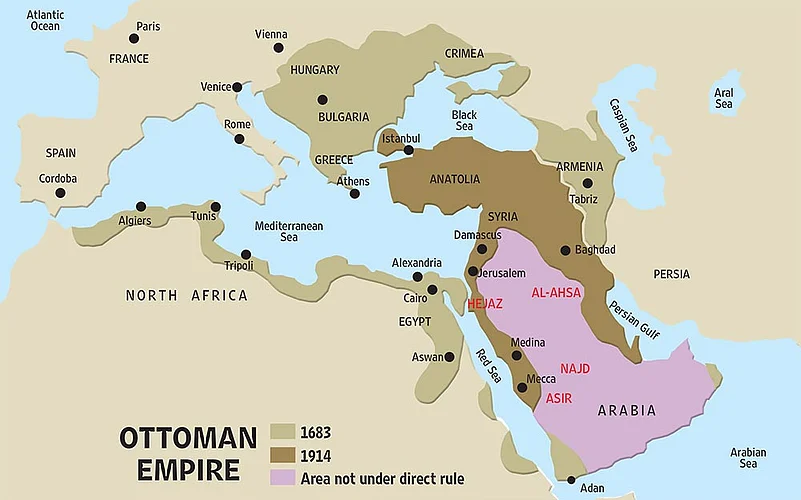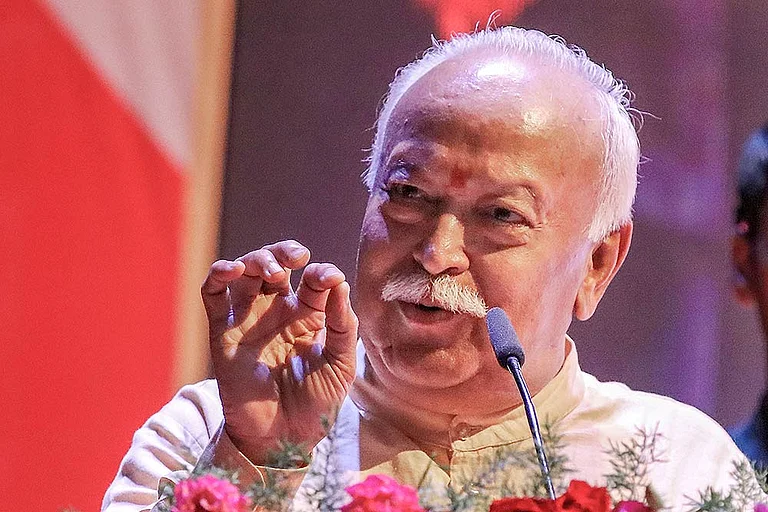1. Four regions—Hejaz, Najd, Al-Ahsa (East Arabia) and Asir (South Arabia) make up Saudi Arabia, with a total area of approx. 2,150,000 sq kms, making it the fifth largest Asian country and second largest nation in the Arab world
2. The Saudi royal family or the Al Saud was a clan that emerged from the central Arabian area of Nejd in 1744 as Muhammad bin Saud, founder of the dynasty, enters into a coalition with religious leader Mohammad ibn Abdul Wahhab and adopts his movement, “Wahhabiyya’
3. With the religious warriors of Abdul Wahhab, known as “Ikhawan”, Al Saud manages to expand his control rapidly over other parts of the region, with Riyadh as centre of his operation
4. By 1773 it completes control over central and southern Najd and in the late 1780s adds northern Najd to its territory. Al-Hasa falls to Saudis in 1792 and it gains control of Taif in 1802 and of Medina in 1804. These areas were then not under direct Ottoman rule.
5. But Mecca remains under the Hashemites, under the loose control of the Ottoman regime from Istanbul
6. In 1818, the coalition is defeated by the Ottoman army under the command of Muhammad Ali al Masud ibn Agha of Egypt; the first Saudi state is destroyed
7. A much smaller Saudi state is established in 1824 in Nejd, but in the 19th century Al Saud is engaged with another rival clan, Al Rashidi. But in 1891 Al Saud is defeated by Al Rashid and forced into exile in Kuwait.
8. From 1902, Abdul Aziz ibn Abdul Rahman al Fayad Al Saud, or Ibn Saud, who along with his band of “Ikhwan” fighters defeats the old foe, the Rashidi clan, and takes back Riyadh, subsequently declaring it his capital
9. In 1913 Ibn Saud conquers the Hasa region of Eastern Arabia from the Turks—a region Istanbul had failed to integrate in the empire since 1871 to control the Persian Gulf. By the time Ibn Saud takes the main town, Hufuf, it is no longer under Ottoman control.
10. In 1915, faced with the rise of a powerful and new ruler in the Gulf, the British concludes a treaty with Ibn Saud, recognising his leadership and extends British protection over the central and eastern Arabian territories that are then under his control

11. Ibn Saud pledges not to sell his territory to any other power without prior approval of the British. He is given £20,000, plus a stipend and large numbers of rifles and machine guns, to be used against the Turks. London asks T.E. Lawrence to engage with its other ally, Sharif Hussein bin Ali, Emir of Mecca.
12. From 1916-18 Ibn Saud starts consolidating his position further, expands his territory and challenges Sharif Hussein of Mecca, who had declared himself as “king of the Arab countries”.
13. In 1918, the two rivals fight over the oasis town of Khurma and Ibn Saud and his Ikhwan soldiers manage to expand their control of other nearby areas as well.
14. In 1921 Britain tries another treaty with Hussein and sends Lawrence again, promising Mesopotamia and Trans-Jordan to his sons Faysal and Abdullah
15. Hussein refuses to sign the treaty, miffed at British betrayal, as the land promised to him during the war against the Ottomans is taken by the French as part of the Sykes-Picot agreement. His sons, Faysal and Abdullah are subsequently made kings of Iraq and Transjordan respectively.
16. 1924: Ibn Saud regroups and sets out to establish his control over Hijaz. Egypt’s nationalist leader Sayeed Zaghlul becomes PM.
17. But only after a long siege of Jeddah does Hashemite resistance break and Ibn Saud manages in early 1925 to gain control over the Hijaz, forcing king Hussein into exile
18. Ibn Saud is proclaimed “sultan of Najd and king of the Hijaz” and the British enter into a new treaty with him in 1927, recognising his sovereignty. Abdulaziz expands territory and renames his kingdom as Saudi Arabia in 1932.

***
Monarchs Of Saudi Arabia Since Its Formation In 1932
Abdul Aziz bin Abdul Rahman bin Faisal (1932-1953)
- Patriarch and founder of the royal House of Saud
Saud bin Abdul Aziz (1953-1964)
- Led reforms, deposed due to profligacy
Faisal bin Abdul Aziz (1964-1975)
- Espoused pan-Islamism, assassinated by nephew
Khalid bin Abdul Aziz (1975-1982)
- Oversaw evelopment, popular with all forces
Fahd bin Abdul Aziz (1982 2005)
- Donated lavishly, pro-Saddam. ‘Custodian of two holy mosques’.
Abdullah bin Abdul Aziz (2005-2015)
- Pro-Palestinian, adopted anti-terror policy post 9/11
Salman bin Abdul Aziz (2015-)
- Current king, named son successor, abandons custom
Crown Prince
- Mohammad bin Salman: Consolidated power after anti-corruption purge
By Pranay Sharma; Graphics By Saji C.S.

























